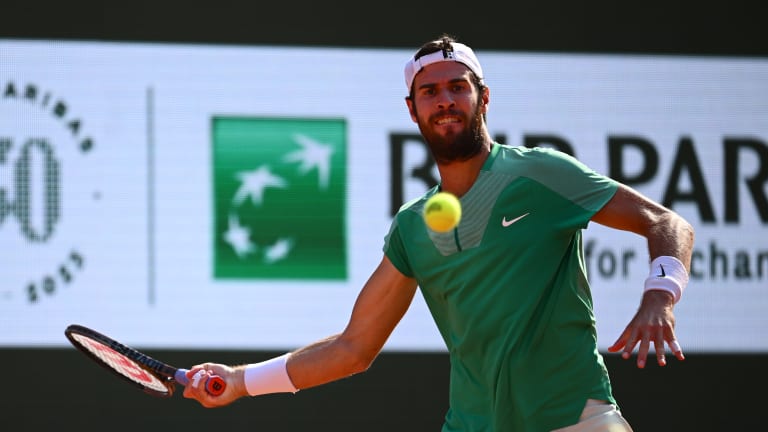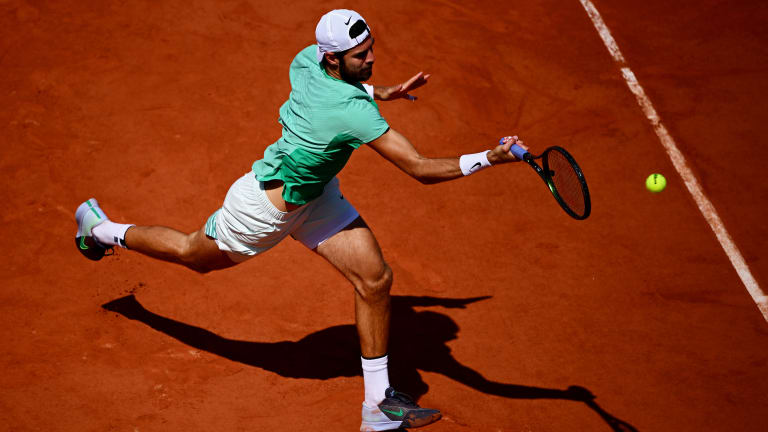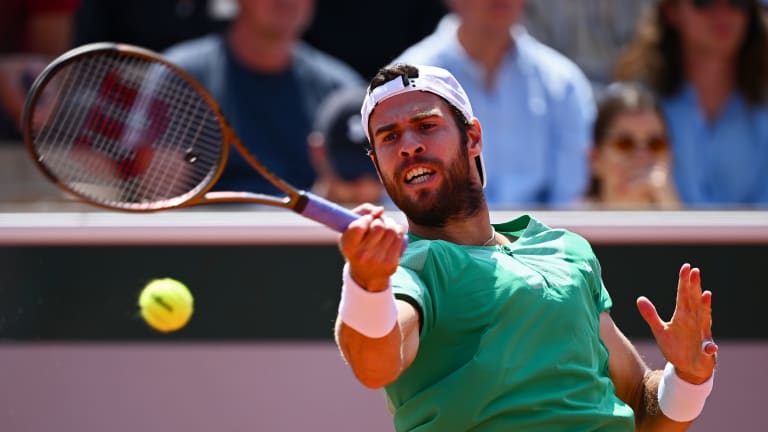Your Game
TECH Talk: Karen Khachanov's fiery forehand
By Jun 15, 2023Your Game
Racquet Review: Yonex EZONE 100
By Apr 20, 2025Your Game
Geared Up: Andrey Rublev keeps letting it rip with Head and K-Swiss
By Apr 19, 2025Your Game
Tariffs are serving up challenges to the tennis equipment industry
By Apr 13, 2025Your Game
The Partner ball machine uses robotics to revolutionize tennis training
By Apr 12, 2025Your Game
Racquet Review: Wilson Clash 100 Pro v3
By Apr 06, 2025Your Game
Shoe Review: Adidas Ubersonic 5
By Apr 05, 2025Your Game
Doubles Partners: Asics and A.P.C. team up for one-of-a-kind tennis collection
By Mar 30, 2025Your Game
Babolat and Lamborghini collaborate on new padel racquet collection
By Mar 29, 2025Your Game
Madison Keys: how racquet change led to first Grand Slam title
By Mar 28, 2025Your Game
TECH Talk: Karen Khachanov's fiery forehand
How an extreme grip is working wonders for a top-performing game.
Published Jun 15, 2023
Advertising
Advertising

Look closely: He grips the racquet from underneath which makes the racquet head naturally closed.
© GETTY IMAGES

A fully extended Khachanov coming up on the ball.
© GETTY IMAGES
Advertising

The racquet brushes up on the ball.
© GETTY IMAGES